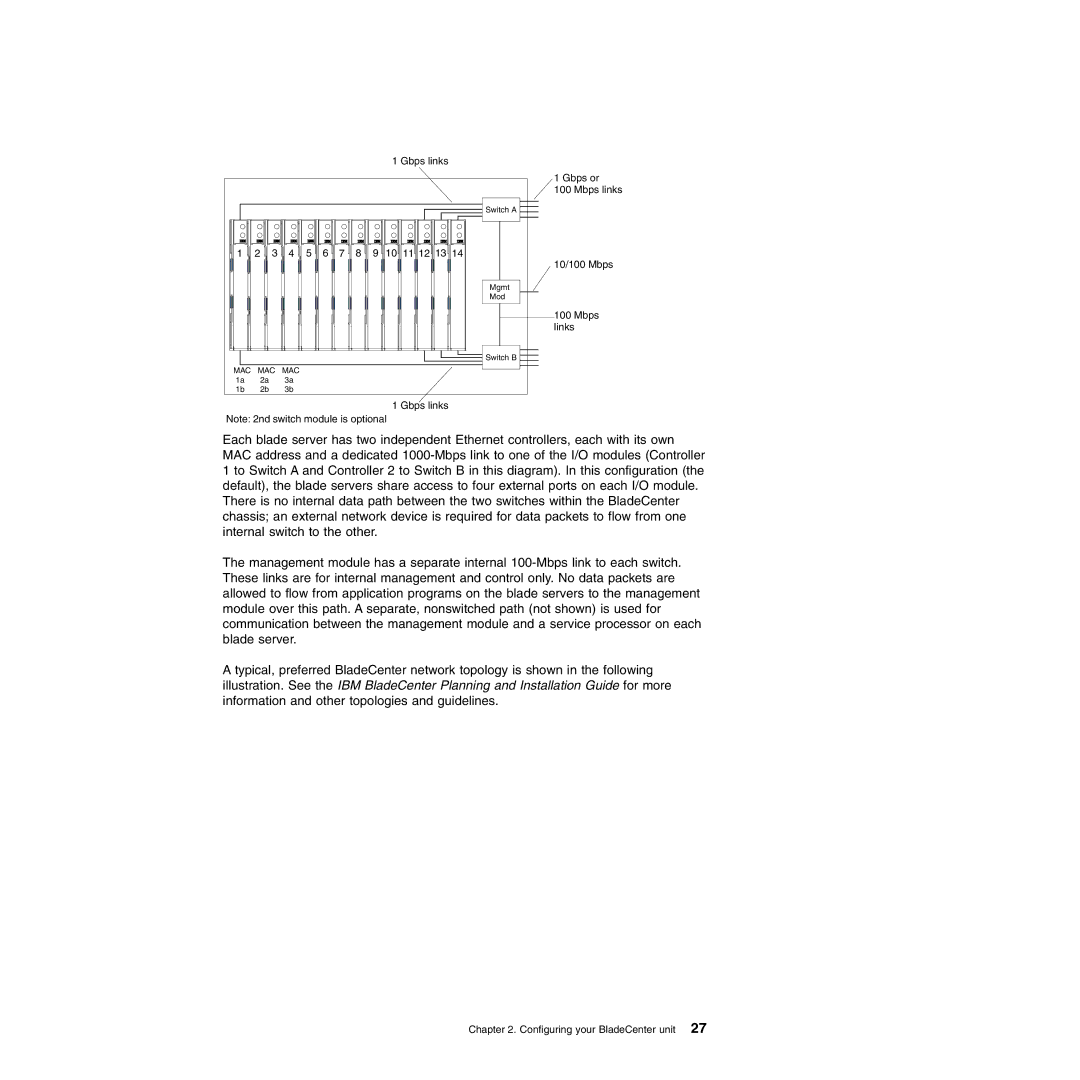1 Gbps links
| | | | | | | | | Switch A |
1 | 2 | 3 | 4 | 5 | 6 | 7 | 8 | 9 | 10 11 12 13 14 |
| | | | | | | | | Mgmt |
| | | | | | | | | Mod |
| | | | | | | | | Switch B |
MAC | MAC | MAC | | | | | | |
1a | | 2a | 3a | | | | | | |
1b | | 2b | 3b | | | | | | |
1 Gbps links
Note: 2nd switch module is optional
1 Gbps or
100 Mbps links
10/100 Mbps
100Mbps links
Each blade server has two independent Ethernet controllers, each with its own MAC address and a dedicated 1000-Mbps link to one of the I/O modules (Controller 1 to Switch A and Controller 2 to Switch B in this diagram). In this configuration (the default), the blade servers share access to four external ports on each I/O module. There is no internal data path between the two switches within the BladeCenter chassis; an external network device is required for data packets to flow from one internal switch to the other.
The management module has a separate internal 100-Mbps link to each switch. These links are for internal management and control only. No data packets are allowed to flow from application programs on the blade servers to the management module over this path. A separate, nonswitched path (not shown) is used for communication between the management module and a service processor on each blade server.
A typical, preferred BladeCenter network topology is shown in the following illustration. See the IBM BladeCenter Planning and Installation Guide for more information and other topologies and guidelines.
Chapter 2. Configuring your BladeCenter unit 27

